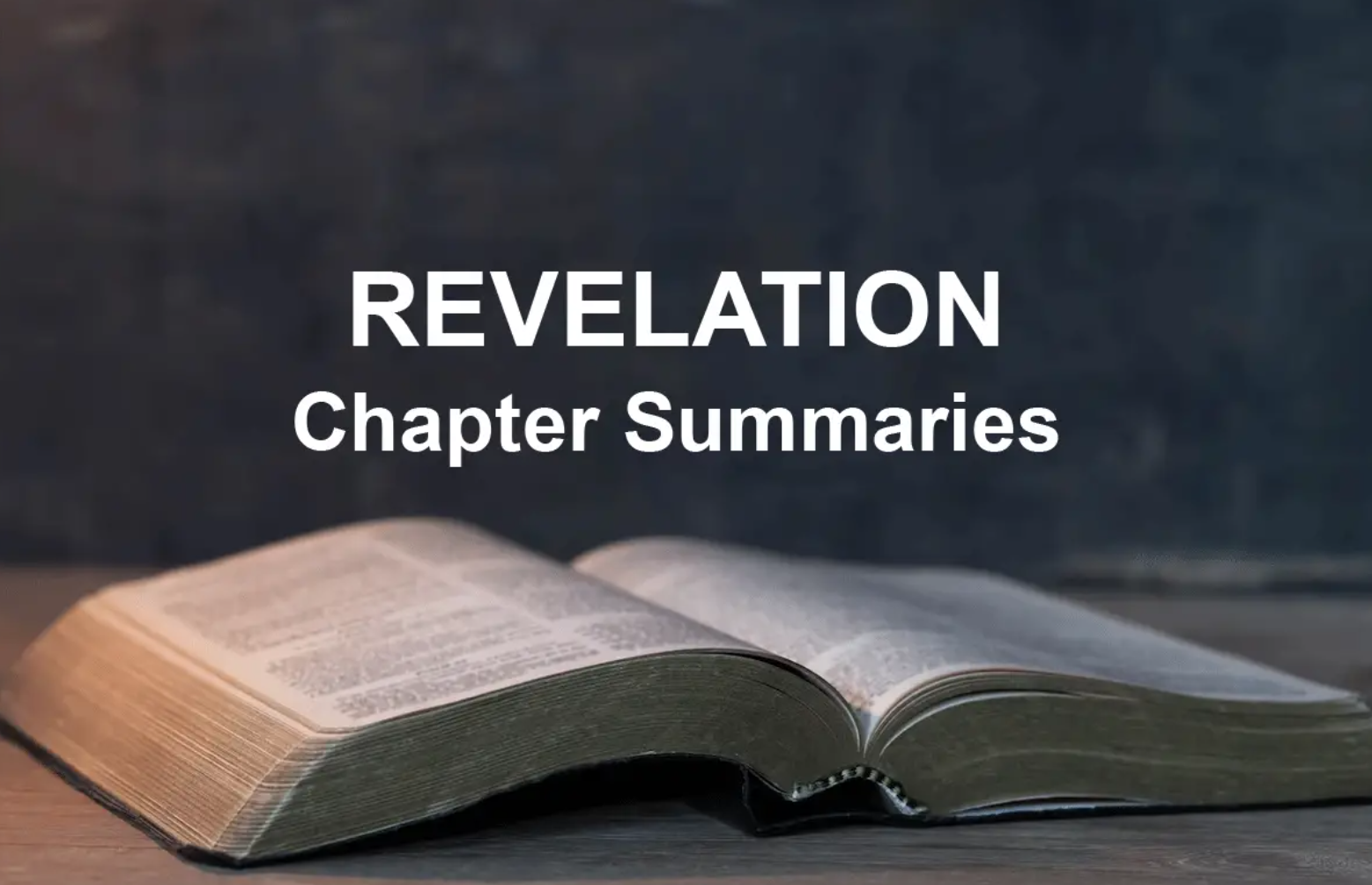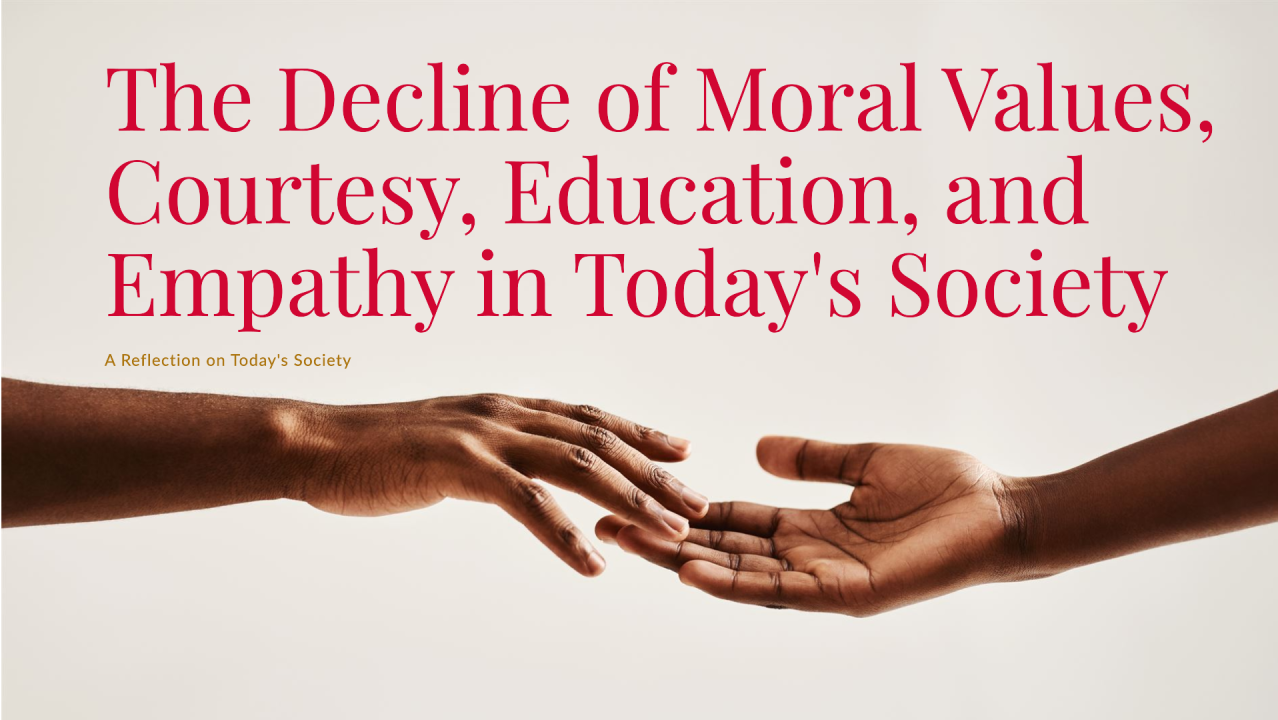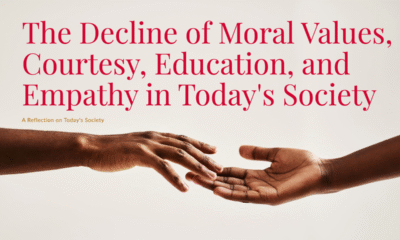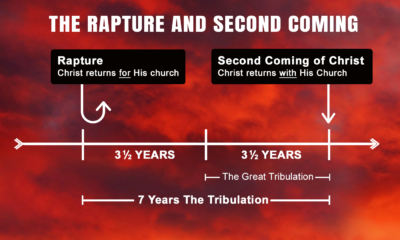End Times Updates
The Book of Revelation: A Chapter-by-Chapter Breakdown
As the Book of Revelation progresses, the final chapters describe the ultimate victory of Christ over the forces of evil, the final judgment, and the establishment of a new heaven and new earth

The Book of Revelation, the final book of the Bible, is rich in symbolism and prophetic imagery. It is often seen as a vision of the ultimate triumph of good over evil, offering both a glimpse of future events and a deeper understanding of God’s sovereignty over the world. The book is attributed to the Apostle John, who recorded these visions while exiled on the island of Patmos in the late first century. As with many prophetic and apocalyptic texts, Revelation has been the subject of much debate and interpretation throughout the history of the Church.
In this chapter-by-chapter breakdown of the Book of Revelation, we will explore each section of the book, its major themes, and how these visions are relevant to Christians today.
Introduction to the Book of Revelation
Revelation is often categorized as an apocalyptic book, a genre of prophecy that reveals divine mysteries about the end times, the ultimate victory of good over evil, and the coming of God’s Kingdom. The book begins with a prologue (Revelation 1:1-8), followed by letters to seven churches (Revelation 2-3). From there, the book delves into vivid visions of the heavenly realm and future events, including judgments, wars, and the final establishment of a new heaven and new earth.
The key themes of Revelation include:
- The ultimate triumph of Christ over evil
- The hope and encouragement for believers amid persecution
- The sovereignty of God over history
- The final judgment and the eternal destiny of humanity
Chapter 1: The Vision of the Son of Man
The Book of Revelation begins with an introduction where John provides an account of his encounter with the risen Christ. The first chapter is vital because it sets the stage for the visions that will unfold throughout the book.
- The Revelation of Jesus Christ (Revelation 1:1-3): The book is introduced as a revelation, or unveiling, of Jesus Christ, given to John through an angel. It is meant to show His servants the things that must soon take place. This chapter highlights the importance of this prophetic book and promises blessings to those who read, hear, and take to heart its words.
- John’s Commission (Revelation 1:4-8): John greets the seven churches in Asia and delivers a message of grace and peace from God the Father, the Holy Spirit, and Jesus Christ. Christ is described as the faithful witness, the firstborn from the dead, and the ruler of the kings of the earth. His return is foretold, with the promise that every eye will see Him and all will acknowledge Him as Lord.
- The Vision of Christ (Revelation 1:9-20): John then sees a powerful vision of Christ, standing among seven golden lampstands, holding seven stars in His hand. Christ’s appearance is described in majestic and symbolic terms: He has white hair, eyes like flames of fire, a voice like rushing waters, and feet like bronze. The vision emphasizes Christ’s authority, purity, and judgment. Christ instructs John to write down what he has seen and to send it to the seven churches.
Chapters 2-3: The Letters to the Seven Churches
Chapters 2 and 3 contain letters to seven churches in Asia Minor (modern-day Turkey). These churches represent both literal congregations of the early church and symbolic lessons for all believers throughout history.
- Ephesus (Revelation 2:1-7): The church at Ephesus is commended for its hard work and perseverance but rebuked for losing its first love. Christ calls the church to repent and return to its original zeal for Him. The promise to those who overcome is the right to eat from the tree of life in paradise.
- Smyrna (Revelation 2:8-11): The church at Smyrna is encouraged to endure persecution and tribulation. Christ assures them that their suffering will be rewarded, and they will not be hurt by the second death (eternal separation from God).
- Pergamum (Revelation 2:12-17): The church at Pergamum is praised for holding fast to the faith, even in the midst of persecution, but is rebuked for tolerating false teachings, including the heresy of Balaam and the Nicolaitans. The church is called to repent, and those who overcome will receive hidden manna and a white stone with a new name.
- Thyatira (Revelation 2:18-29): The church at Thyatira is commended for its love, faith, service, and perseverance but is reprimanded for tolerating Jezebel, a false prophetess who leads people into immorality and idolatry. Christ warns of judgment and calls for repentance. The faithful are promised authority over the nations and the morning star (Christ Himself).
- Sardis (Revelation 3:1-6): The church at Sardis is rebuked for having a reputation for being alive but being spiritually dead. They are urged to wake up, strengthen what remains, and repent. The faithful will be dressed in white garments, and their names will not be blotted out of the book of life.
- Philadelphia (Revelation 3:7-13): The church at Philadelphia is commended for its faithfulness and endurance despite having little strength. Christ promises to protect them from the hour of trial and to make them a pillar in the temple of God. The faithful will receive the name of God, the city of God, and Christ’s new name.
- Laodicea (Revelation 3:14-22): The church at Laodicea is rebuked for being lukewarm—neither hot nor cold. They are called to repent, as they are spiritually blind and poor despite their material wealth. Christ invites them to open the door to Him and receive fellowship. The faithful will share in His throne.
Chapter 4: The Throne Room of Heaven
In this chapter, John is taken up to heaven and experiences a vision of the throne room of God. The chapter is filled with imagery of God’s glory, sovereignty, and worship.
- The Throne of God (Revelation 4:1-6): John describes a vision of God’s throne, surrounded by twenty-four elders, four living creatures, and a sea of glass. The throne is the center of all creation, and all creation worships God, acknowledging His power, holiness, and eternal nature.
- The Worship of God (Revelation 4:7-11): The four living creatures continuously worship God, each of them representing a facet of creation. The twenty-four elders fall before God, casting their crowns before the throne and declaring God’s worthiness to receive glory, honor, and power.
Chapter 5: The Lamb and the Scroll
Chapter 5 introduces the Lamb (Jesus Christ) who is worthy to open the scroll with seven seals. This chapter emphasizes Christ’s role in salvation and His worthiness to bring about God’s redemptive plan.
- The Scroll and the Lamb (Revelation 5:1-7): A scroll sealed with seven seals is presented, and a search is made for someone worthy to open it. No one in heaven or earth is found worthy, causing John to weep. Then, the Lamb, symbolizing Jesus, appears and is declared worthy to open the scroll because of His sacrificial death.
- The Worship of the Lamb (Revelation 5:8-14): As the Lamb opens the scroll, all of creation—angels, elders, and creatures—worship Him, declaring that He is worthy to receive power, wealth, wisdom, strength, honor, glory, and praise. This worship centers on the Lamb’s redemptive work, His victory over sin, and His role in God’s eternal plan.
Chapter 6: The Seven Seals
The opening of the seven seals marks the beginning of judgment and the unfolding of future events. As each seal is broken, a new vision is revealed.
- The First Four Seals: The Four Horsemen of the Apocalypse (Revelation 6:1-8): The first four seals introduce the Four Horsemen—conquest, war, famine, and death. These horsemen symbolize the trials, tribulations, and catastrophes that will occur in the world as part of God’s judgment.
- The Fifth Seal: The Martyrs (Revelation 6:9-11): The fifth seal reveals the souls of martyrs who have died for their faith. They cry out for justice, and God promises to avenge their blood in His timing.
- The Sixth Seal: The Great Earthquake (Revelation 6:12-17): The sixth seal unleashes a great earthquake, and cosmic disturbances occur. The sky is rolled up like a scroll, and people from all walks of life hide in fear, knowing that the day of God’s judgment has arrived.
Chapter 7: The 144,000 and the Great Multitude
In the seventh chapter, we see a vision of the sealing of 144,000 Israelites, followed by a vision of a great multitude of believers from every nation, tribe, people, and language, who stand before the throne and the Lamb.
- The Sealing of the 144,000 (Revelation 7:1-8): The 144,000 are sealed from the twelve tribes of Israel, representing God’s protection and preservation of His people during the tribulation.
- The Great Multitude in White Robes (Revelation 7:9-17): The great multitude, which no one can count, stands before the throne, worshiping God and the Lamb. They have come out of the great tribulation and have been washed clean by the Lamb’s blood. God promises to shelter and care for them forever.
Chapters 8-9: The Seven Trumpets
As the seventh seal is opened, seven trumpets are prepared to sound, each bringing further judgments on the earth. The trumpet judgments intensify the suffering that begins with the seals, symbolizing the escalation of God’s judgment against sin and rebellion.
- The First Six Trumpets (Revelation 8-9): These trumpets bring plagues, including hail and fire, a burning mountain, a star called Wormwood, and various locusts and demonic forces that torment humanity. Despite these severe judgments, many people continue to refuse to repent of their evil deeds.
Chapter 10-11: The Little Scroll and the Two Witnesses
In these chapters, we see a vision of a mighty angel with a little scroll, followed by the testimony of two witnesses who prophesy in Jerusalem during a time of great tribulation.
- The Angel and the Little Scroll (Revelation 10): The mighty angel’s declaration emphasizes God’s sovereignty and the completion of His mystery. John is instructed to eat the little scroll, which tastes sweet in his mouth but becomes bitter in his stomach. This symbolizes the bittersweet nature of God’s judgment and redemption.
- The Two Witnesses (Revelation 11): Two witnesses prophesy in Jerusalem, proclaiming God’s truth and performing miracles. They are eventually killed by the beast from the abyss, but after three and a half days, they are resurrected and taken to heaven, prompting fear and awe among those who witness it.
Chapters 12-13: The Woman, the Dragon, and the Beast
These chapters introduce two significant symbols: the woman (representing Israel or the Church) and the dragon (representing Satan). The beast rises from the sea, symbolizing a powerful, oppressive political ruler.
- The Woman and the Dragon (Revelation 12): The woman gives birth to a male child (Jesus) who is destined to rule the nations. The dragon (Satan) attempts to destroy the child but fails. The woman flees into the wilderness, symbolizing God’s protection of His people.
- The Beast from the Sea and the Beast from the Earth (Revelation 13): The two beasts represent forces of evil—one political and one religious—that will oppose God’s people in the end times. The beasts deceive and persecute believers, leading many astray.
Conclusion: The Final Victory
As the Book of Revelation progresses, the final chapters describe the ultimate victory of Christ over the forces of evil, the final judgment, and the establishment of a new heaven and new earth. Christ triumphs, Satan is defeated, and God’s eternal kingdom is established, providing the ultimate hope for believers.
Revelation calls Christians to remain faithful, endure persecution, and anticipate the ultimate redemption that will come with Christ’s return. The message of Revelation is one of hope, victory, and the assurance that God will bring all things to completion in His time.
Christian Life
The Tragedy of Moral Decay in Higher Learning institutions
Explore the growing moral decay in higher learning institutions, its causes, consequences, and impact on academic integrity and societal values.

For years, universities, Colleges and other Higher learning institutions were seen as places of intellectual growth and character development. However, many higher learning institutions today have become breeding grounds for moral decadence, where students and even lecturers engage in behaviors that destroy both academic integrity and personal values. From unchecked sexual immorality to rampant substance abuse, violence, and corruption, the decay runs deep.
Sexual immorality is one of the biggest stains on campus life. What was once considered shameful has become normal, even celebrated. Fornication is common, with students engaging in casual relationships driven by lust rather than love. Many young women fall victim to deceitful love affairs, only to be left heartbroken and used.
The normalization of lesbianism and homosexuality has also taken root. Some students, influenced by peer pressure or curiosity, experiment with same-sex relationships, leading to moral confusion and identity crises. Others engage in secret affairs with older partners or even lecturers who manipulate them in exchange for better grades or
financial benefits. Adultery is rampant, with some married lecturers preying on students, turning the academic environment into a den of sexual corruption.
Academic dishonesty is another deep-seated issue. Hard work and diligence are now seen as outdated concepts, replaced by cheating, bribery, and leaked examination papers. Some students no longer feel the need to study, relying instead on corrupt lecturers who sell grades to the highest bidder. The value of education has been reduced to a mere transaction, and many graduates leave university without the knowledge or skills needed to succeed.
Campus life has also become synonymous with drug and alcohol abuse. The pursuit of pleasure has overtaken the pursuit of knowledge. Many students indulge in excessive drinking, turning nights into a blur of parties and reckless behavior. The use of drugs—marijuana, cocaine, and other harmful substances—has become widespread, with some students getting addicted and ruining their futures.
Smoking is no longer seen as a bad habit but as a sign of independence and “maturity.” Shisha lounges and secret drug dens operate freely, drawing in young people who waste their lives in addiction. Many students skip classes, spending their time in bars and drug joints rather than in lecture halls.
As morality declines, violence increases. The lack of self-control and discipline among students has led to tragic incidents of stabbings and deadly fights. Many of these cases stem from toxic love triangles, where jealousy and betrayal push students to take extreme actions.
Reports of students stabbing each other to death over relationships have become disturbingly common.
A boyfriend catches his girlfriend texting another man and, in a fit of rage, pulls out a knife. A girl, blinded by jealousy, attacks a fellow student over suspicions of an affair. Such incidents reveal the deep emotional instability and lack of moral guidance among students, leading to irreversible consequences.
Campus hostels, once meant to be safe spaces for students, have become crime scenes where love-fueled violence erupts. Arguments escalate into fistfights, and fistfights turn into stabbings. Instead of resolving conflicts through dialogue, students resort to deadly force, ending promising lives before they even begin. The inability to manage emotions, coupled with the influence of drugs and alcohol, has made universities hotbeds of violence.
With all these vices comes an inevitable consequence: depression and hopelessness. Many students, trapped in toxic relationships, addiction, and academic failure, fall into deep despair. The pressure to fit into this morally decayed society leaves many feeling empty and worthless.
End Times Updates
A Nation in Crisis: In Search of Redemption.

For a nation plagued with incessant successive crises on the verge of imploding, Kenya seems resigned to the fatalistic tendencies. Deficient urgency and abundant indifference appear to be the modus operandi, ‘Borauhai’ being the de facto national motto. So compromised is the national psyche that doing what’s right is scorned and decadence is appreciated.
While once she had grand ambitions of joining the League of the Mighty, Kenya is now contented with feeding on crumbs. Not long ago, she aspired to be the African version of the Asian Tigers, but now a beggar’s bowl goes ahead of her. It is incumbent upon her people, therefore, to rewind and reflect on when she lost her way and restore her Zeitgeist.

The nation’s soul is at stake; deeply spiritual as she is, the current situation leaves a lot to be desired. Congregations are shrinking while the number of churches is mushrooming exponentially. Suffice it to say, the Church is in a conundrum. While once emanating from the pulpit was God’s love and a place in heaven, the priesthood is now fixated on the materialistic.
There seem to be no limits to the lows the Church is willing to pander to in pursuit
of the worldly.
While Christ Jesus drove out those hawking merchandise in God’s temple, a sad reality of the pulpit is now an auction for the highest bidder, disregarding its sanctity. Politicians now campaign and deceive from the pulpit.
The hapless congregants are left wondering if there is another way, all while charlatans and fraudsters prey on the trusting. All hope seems lost, the gospel binned and replaced by treaties on wealth and mortal indulgence.
Amidst all these controversies, scandals, and leadership wrangles in the church, there appears one bucking this trend. Insisting on the need to go back to the ways of the first church, and the eminence of the Bible [SolaScriptura], is one Prophet Dr. Owour. In the face of ceaseless adversity, he has consistently preached on the coming of Jesus based on the sacred texts with unmatched zest.
Perhaps implosion is not inevitable; there just might be hope for the nation!
End Times Updates
What is Rapture
The concept of the “Rapture” holds a significant place in Christian eschatology, the study of the end times.

The concept of the “Rapture” holds a significant place in Christian eschatology, the study of the end times. While interpretations of the Rapture vary among different Christian denominations, it is generally understood as an event in which believers in Jesus Christ are caught up from the earth to meet the Lord in the air. This event is associated with the Second Coming of Christ, and it marks the beginning of a series of transformative and apocalyptic events that will culminate in the fulfillment of God’s divine plan for the world.
This essay aims to explore the Rapture in-depth, examining its biblical foundations, theological implications, historical development, various interpretations, and its significance in the broader context of Christian eschatology. Understanding the Rapture requires careful attention to the scriptures, theological viewpoints, and the various perspectives that have shaped Christian thought over the centuries.
1. Biblical Foundation of the Rapture
The term “Rapture” itself is not found in most translations of the Bible. It is derived from the Latin word rapio, meaning “to seize, carry off, or snatch away,” which is used in the Latin Vulgate translation of 1 Thessalonians 4:17. In this verse, the Apostle Paul describes the event where believers will be “caught up” to meet Christ in the air. This passage, along with several other key texts, forms the biblical foundation for the doctrine of the Rapture.
A. 1 Thessalonians 4:13-18
The primary passage in support of the Rapture is 1 Thessalonians 4:13-18, where Paul comforts the believers in Thessalonica concerning those who have died in Christ. He writes:
“For the Lord himself will come down from heaven, with a loud command, with the voice of the archangel and with the trumpet call of God, and the dead in Christ will rise first. After that, we who are still alive and are left will be caught up together with them in the clouds to meet the Lord in the air. And so we will be with the Lord forever. Therefore encourage each other with these words.” (1 Thessalonians 4:16-18, NIV)
This passage describes an event where the living and the resurrected believers are “caught up” together to meet the Lord. The term “caught up” (Greek harpazo) is often understood as a snatching away or a quick and forceful gathering. This is the basis for the concept of the Rapture in many Christian teachings, which hold that the faithful will be taken up to be with Christ before a period of great tribulation on earth.
B. 1 Corinthians 15:51-52
Another key passage is found in 1 Corinthians 15:51-52, where Paul writes about the transformation of believers at the resurrection:
“Listen, I tell you a mystery: We will not all sleep, but we will all be changed—in a flash, in the twinkling of an eye, at the last trumpet. For the trumpet will sound, the dead will be raised imperishable, and we will be changed.” (1 Corinthians 15:51-52, NIV)
This passage provides a further description of the transformation of believers, as they are changed in a moment at the sound of the last trumpet. It echoes the idea of a sudden, dramatic event where the faithful are transformed and taken to be with the Lord.
C. Matthew 24:36-42 and Revelation 16:15
Though not directly mentioning the Rapture, passages like Matthew 24:36-42 and Revelation 16:15 are often cited to support the belief in a separation between the righteous and the wicked in the end times. In Matthew 24, Jesus speaks of the suddenness of His return, comparing it to the days of Noah when people were taken and others left behind:
“Two men will be in the field; one will be taken and the other left. Two women will be grinding with a hand mill; one will be taken and the other left.” (Matthew 24:40-41, NIV)
Some interpret this as a reference to the Rapture, where believers are taken while others are left behind. Similarly, in Revelation 16:15, a warning is given to stay awake, which some interpret as a call for readiness for the Rapture.
2. Theological Interpretations of the Rapture
Over time, different Christian denominations and theologians have developed varying interpretations of the Rapture. These interpretations generally fall into four main categories: Pre-Tribulation, Mid-Tribulation, Post-Tribulation, and Pre-Wrath Rapture. Each perspective holds different views about when the Rapture will occur in relation to the Tribulation—a seven-year period of intense suffering and judgment described in the Bible.
A. Pre-Tribulation Rapture
The Pre-Tribulation Rapture theory posits that Christians will be taken up before the Tribulation period begins. This view became especially popular in the 19th century with the rise of dispensationalism and was made widely known through the writings of John Nelson Darby and the Left Behind series of novels. According to this view, the faithful are removed from the earth to avoid the coming wrath, and the Tribulation period is seen as a time of judgment for the unbelieving world.
- Support for Pre-Tribulation Rapture: Proponents of this view often cite 1 Thessalonians 4:16-17 and 1 Corinthians 15:51-52 as evidence that believers will be taken before the period of suffering. They argue that the Church is not destined for wrath, as seen in passages like 1 Thessalonians 5:9: “For God did not appoint us to suffer wrath but to receive salvation through our Lord Jesus Christ.”
- Theological Implication: The Pre-Tribulation Rapture emphasizes God’s grace and mercy toward His people. It views the Church as distinct from Israel and sees the Tribulation as primarily focused on the Jewish people and the nations that have rejected Christ.
B. Mid-Tribulation Rapture
The Mid-Tribulation Rapture theory suggests that believers will be caught up at the midpoint of the Tribulation, after three and a half years of intense persecution and suffering. This view posits that Christians will experience the early part of the Tribulation but will be spared from the worst of God’s wrath, which is believed to occur during the second half of the Tribulation.
- Support for Mid-Tribulation Rapture: Advocates of this view point to Revelation 11:15-19 and the trumpet judgments as evidence that the worst part of God’s wrath comes after the first three and a half years. They argue that the “last trumpet” mentioned in 1 Corinthians 15:52 refers to the seventh trumpet in Revelation, signaling the rapture at the midpoint of the Tribulation.
- Theological Implication: This view balances the belief that Christians will face some suffering during the Tribulation but will be spared from the ultimate judgment that follows. It reflects a view of God as both just and merciful, allowing believers to endure some tribulation but not the full outpouring of wrath.
C. Post-Tribulation Rapture
The Post-Tribulation Rapture theory posits that believers will be taken up at the end of the Tribulation, after enduring the full seven years of suffering and judgment. This view holds that the Rapture and the Second Coming of Christ are one and the same event, meaning that Christians will go through the Tribulation but will be caught up to meet Christ as He returns to establish His Kingdom.
- Support for Post-Tribulation Rapture: Those who hold this view emphasize passages like Matthew 24:29-31, which describe the return of Christ after the Tribulation, and argue that the Rapture will occur simultaneously with Christ’s Second Coming. They point to the idea that believers are not promised exemption from suffering and that the Church’s mission includes enduring trials and tribulations.
- Theological Implication: The Post-Tribulation view emphasizes the idea of perseverance and faithfulness in the midst of trials. It teaches that Christians will face suffering for Christ’s sake but will ultimately be delivered and rewarded at the end of the Tribulation.
D. Pre-Wrath Rapture
The Pre-Wrath Rapture theory is a more recent interpretation that suggests believers will be taken up shortly before the outpouring of God’s wrath at the end of the Tribulation. This view combines aspects of both the Pre-Tribulation and Post-Tribulation perspectives, holding that the Church will face the tribulation but will be spared from the worst of God’s judgment.
- Support for Pre-Wrath Rapture: This view emphasizes the idea that the Church will not face God’s wrath but will experience persecution and suffering during the Tribulation. It is based on passages like Revelation 6:12-17, where God’s wrath is poured out after the opening of the seals, which some argue happens near the end of the Tribulation.
- Theological Implication: The Pre-Wrath view sees the Church as undergoing some judgment but ultimately being spared from the worst of God’s wrath. It suggests that God’s wrath is separate from the Tribulation, and the faithful will be taken up just before that final judgment.
3. The Rapture in the Broader Context of Christian Eschatology
The Rapture is often understood within the broader context of Christian eschatology, which includes various events such as the Tribulation, the rise of the Antichrist, the Battle of Armageddon, and the ultimate establishment of God’s Kingdom on earth. Understanding the Rapture requires considering these events as part of a timeline of the end times, as described in the Bible.
A. The Tribulation
The Tribulation is a period of intense suffering and judgment that is described in the Book of Revelation. It is a time when the Antichrist will rise to power, and God’s wrath will be poured out on the earth. While the specific duration and nature of the Tribulation are debated, it is commonly seen as a time of great distress for the world.
- The Role of the Rapture: The Rapture is seen as the event that precedes or coincides with the Tribulation, depending on one’s view. Those who hold to the Pre-Tribulation or Pre-Wrath Rapture view believe that the faithful will be taken up to avoid the suffering of the Tribulation. Those who hold the Post-Tribulation view believe that believers will endure the Tribulation but will be delivered at the end.
B. The Return of Christ
The Second Coming of Christ is the ultimate fulfillment of God’s promises to His people. It is when Christ returns to judge the world, defeat evil, and establish His eternal Kingdom. The Rapture is closely connected to the return of Christ, as believers are taken up to meet Him in the air.
- The Link Between the Rapture and the Second Coming: Some views, particularly the Post-Tribulation view, see the Rapture and the Second Coming as one event. Others, like the Pre-Tribulation view, distinguish the Rapture as a separate event that occurs before Christ’s final return to earth.
4. Conclusion: The Hope and Implications of the Rapture
The Rapture is a doctrine that offers hope and comfort to believers, assuring them that Jesus will return to take them to be with Him. It emphasizes the belief in God’s ultimate victory over sin, death, and evil, and it provides encouragement for Christians to remain faithful in the face of trials. While the timing and nature of the Rapture are debated, its significance lies in its affirmation of God’s promises to His people and the ultimate fulfillment of His plan for salvation and restoration.
Ultimately, the Rapture calls Christians to live with a sense of urgency, hope, and anticipation, knowing that Christ will return to complete the work He began and to establish His Kingdom in power and glory.
-

 End Times Updates11 months ago
End Times Updates11 months agoProphet Dr. Owuor Awakens Brazil: A Call to Holiness to the Contemporary Church.
-

 Bible11 months ago
Bible11 months agoIsrael War With Iran Significance
-

 Bible12 months ago
Bible12 months agoIsrael Releases Palestinian Prisoners in Hostage Exchange
-

 Jesus11 months ago
Jesus11 months agoRaising Children Together: A Biblical Approach to Parenting in Marriage
-

 Bible11 months ago
Bible11 months agoDo Israelites Use the Bible?
-

 Church History11 months ago
Church History11 months agoBiblical Principles for Dealing with Conflict
-

 Jesus12 months ago
Jesus12 months agoThe Power of Prayer in Strengthening Your Marriage
-

 Bible11 months ago
Bible11 months agoElijah’s Cup Among the Israelites meaning















